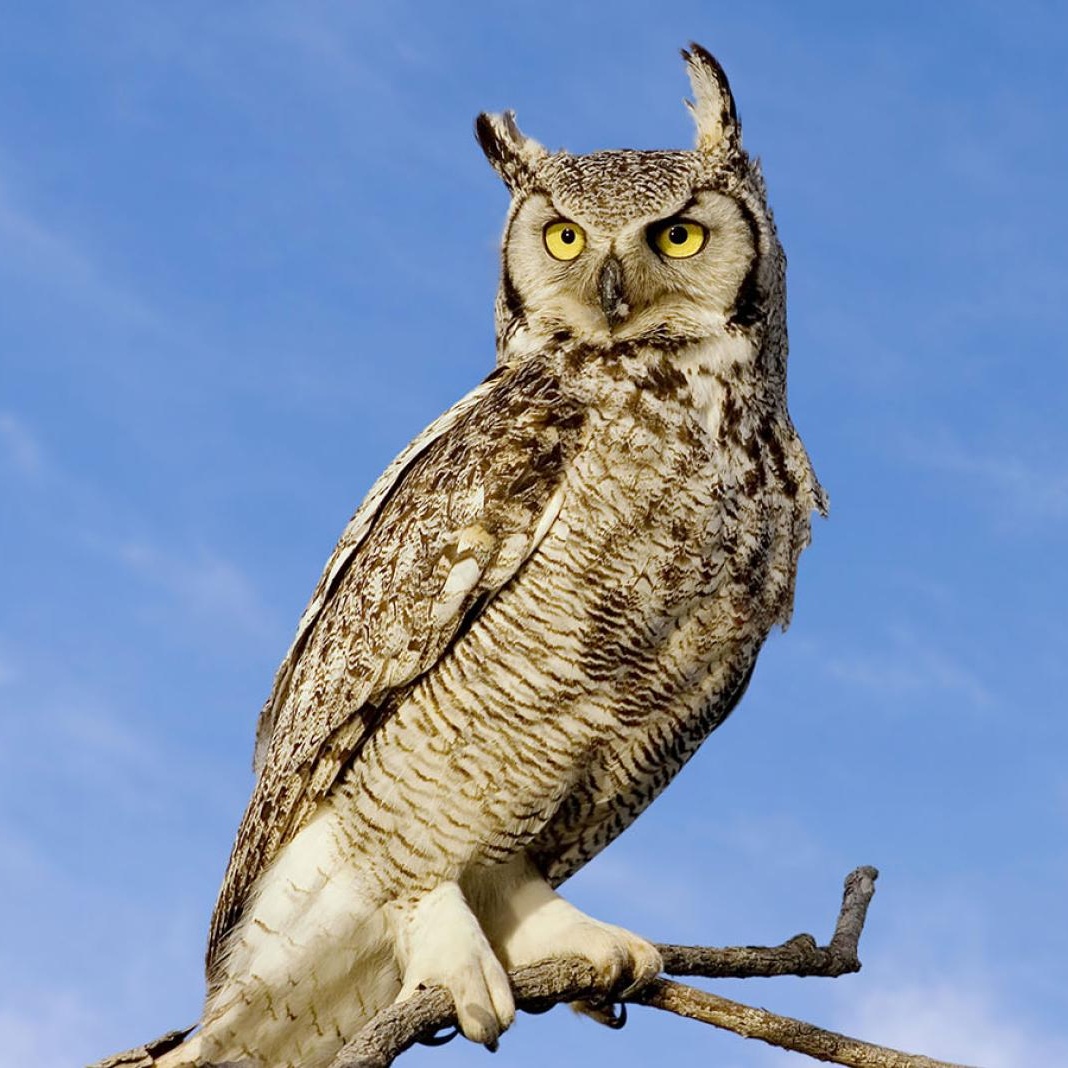Owls in the Park
By Sharon Stiteler, Park Ranger with the Mississippi National River and Recreation Area
Typically winter along the Mississippi River is a time of snowshoeing and ice fishing. Some of us may notice birds but long for May when the colorful migrants like Blackburnian and black-throated green warblers burst onto the scene as they head north to their breeding grounds.
But believe it or not now is the beginning of the bird-breeding season in our park.
Our earliest nesters are great horned owls…though a couple bald eagles are trying to give owls a run for their money this year if you check out the Minnesota DNR’s bald eagle nest cam.
Starting in January you might start to hear the familiar “hoo ho ho hoooooo hooo hoo” of the great horned owl. If you hear that, you can be safe in the knowledge that great horneds are setting up territory. These owls can be found just about anywhere along the 72 mile stretch of the Mississippi National River and Recreation Area, even close to downtown Minneapolis. Good places to check them out include Lilydale Park, Coon Rapids Dam (occasionally one will nest in the heron rookery) and Pike Island.
Great horned owls do not build their own nests but take over old large nests like an old red-tailed hawk nest or even a leafy squirrel nest. Sometimes when we do our spring bald eagle nest monitoring via aerial surveys we even find great horned owls have take over bald eagle nests. That’s pretty impressive when you consider that great horned average about three and a half pounds and bald eagles average ten pounds. But being smaller and more agile at night aids the great horned owl in earning its folk name of “tiger of the woods.”
Great horned owls are strict carnivores and only eat meat. They can afford to start nesting in midwinter because they are adept at capturing the locally available food that includes skunks, rats, rabbits and even other birds. Have you ever noticed the huge crow roost that gathers in downing Minneapolis at dusk? Crows roost together in large flocks to avoid being eaten by predators. Let’s face it, if you are one of 50,000 sleeping in trees barren of leaves, you are less likely to be the one eaten.
However, great horneds still manage to pick off a few crows in the roost. Great horned owls have several rods in their eyeballs, more than cones. That means they can see despite the light being low but they do not see color very well. Also, their entire head is built for specialized hearing. If you look at their faces, the frontof the head is shaped like a satellite dish, allowing it to “capture” the sound. The feathers on the face are short but very sensitive and studies show that the feather structures literally guide sounds to where their ear canals are located. Great horned owl ears are nestled beneath their feathers, but if you can burrow down and find the ear holes in the skull, you’ll notice the ears on either side of the head are uneven, this allows them to triangulate the sound of a mouse under a foot of snow when they bob their heads.
Even a great horned owl’s wings are incredible. Their primary wing feathers are bristled which breaks of the sounds of the “swooshing” with their wings flap. They are built to hunt in darkness when our park’s average daylight range in winter is about ten hours.
Apart from the feathers driving sounds of prey to their ears and hiding the sound of their flight, they are thick and downy, providing ample heat that makes them perfect at incubating eggs in winter. They are really ready to breed this time of year. So keep your ears peeled just after dusk for the familiar great horned owl.

